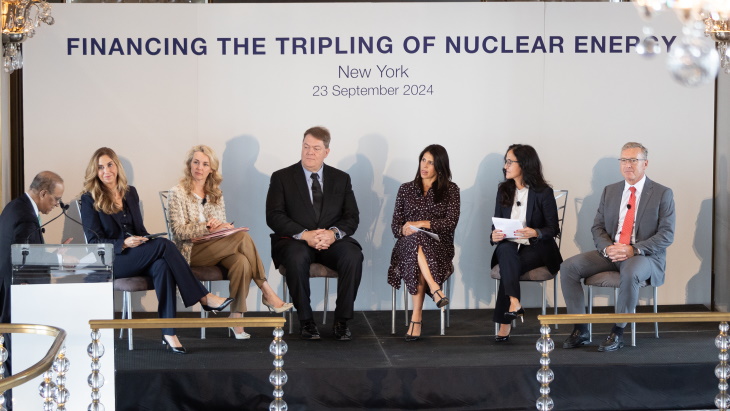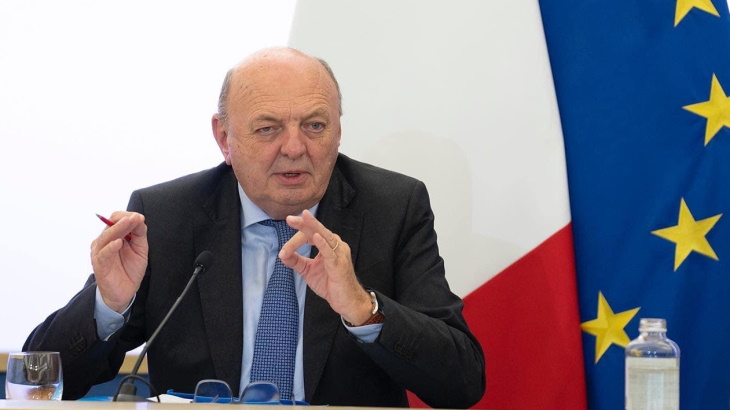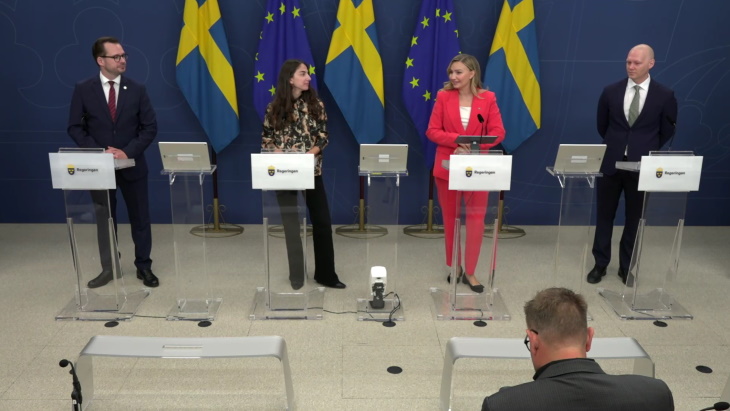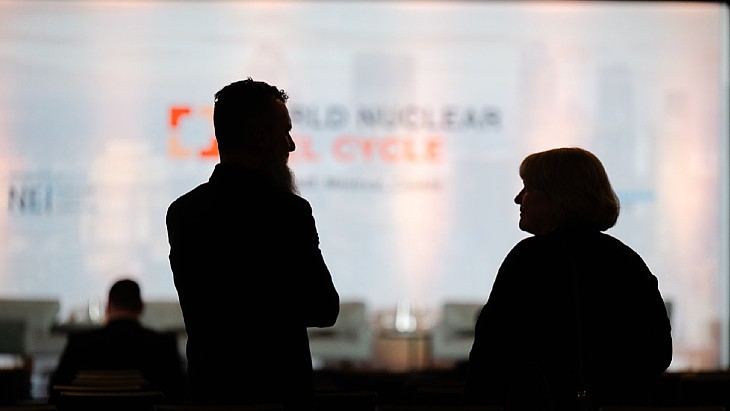Ukrainian head of state stresses role of nuclear power
.jpeg)
Ukraine has 15 nuclear units in commercial operation at four sites - Khmelnitsky, Rovno, South Ukraine and Zaporozhe - which are all operated by state-owned Energoatom. Total electricity production in 2016 amounted to 165 terawatt hours (TWh), with 4 TWh net exports to Europe. In 2016, 81 TWh (49%) was from nuclear, 61 TWh (37%) from coal, 10 TWh from gas, and 9 TWh from hydro. In 2017, nuclear generated 55% of the country's electricity.
"I think that the role currently played by nuclear power engineering, especially in the last four to five years, when we increased the share of nuclear energy to 60-61% in the balance of energy consumption and energy generation, means a huge contribution of nuclear power plants to energy security of the state and diversification of energy supply," Poroshenko said, according to a statement issued by his office. He added: "I want to thank the nuclear scientists for energy security and energy diversification. Good work."
The government considers the construction of additional power units, in particular at the Tashlyk PSP and the Dniester hydroelectric station a priority, he said, adding, "This will further increase the share of nuclear energy and make Ukraine's economy more competitive."
In a separate statement on Poroshenko's visit, Energoatom noted that the South Ukraine Energy Complex is the only enterprise in Ukraine where baseload nuclear and hydro- and pumped-storage facilities are used in an integrated manner. It consists of the South Ukraine nuclear power plant, the Aleksandrovskaya hydropower plant and the Tashlyk PSP. Every year, the energy complex, which is near the country's second-longest river - the Southern Bug - produces 17-20 TWh of electricity, which is about 10% of the total power production in the country and about 20% of its nuclear power generation.
In August 2017, the country's Cabinet of Ministers approved the Energy Strategy of Ukraine until 2035, according to which nuclear power will provide 50% of its electricity, renewable sources 25%, hydropower 13% and the rest will be covered by thermal electric power stations.
Ukraine hosted UNECE's 9th International Forum on Energy for Sustainable Development in November last year. Speaking at a workshop on nuclear power at this event, Yuliya Pidkomorna, deputy minister of the Energy and Coal Industry of Ukraine, said the nuclear sector is the "mainstay" of the country's energy sector. She said the ministry "has always provided, and will always provide, full support to projects in the nuclear sector".
One of the developments she noted between Ukraine and international partners includes the insurance contract signed with the Overseas Private Investment Corporation, the US government's development finance institution, for the Central Spent Fuel Storage Facility at the site of the Chernobyl nuclear power plant. Ukraine imports most of its nuclear fuel from Russia’s TVEL - 69.2% in 2017 - and used fuel from three of its nuclear power plants is also being sent to Russia. The USA’s Westinghouse in November last year announced production of its thousandth fuel assembly for VVER-1000 type reactors - for South Ukraine nuclear power plant. The assemblies were produced by its Västerås, Sweden-based subsidiary.
The Cabinet of Ministers has also approved a feasibility study for the construction of two new units at the Khmelnitsky nuclear power plant. Another example of pro-nuclear policy is the 'energy bridge' project, which will enable the country to start supplying electricity to the EU network from as early as this year. The Ukraine-EU Energy Bridge will link Khmelnitsky unit 2 to Burshtyn Energy Island and connect with powerlines to Rzeszów in Poland and Albertirsa in Hungary.
In June last year, at the Assembly of the European Network of Transmission System Operators (ENTSO-E), Vsevolod Kovalchuk, CEO of national transmission system operator Ukrenergo, signed an agreement on the conditions of the future accession of Ukraine to the pan-European power grid. Full integration with ENTSO-E is planned by 2025.



.jpg)






_50521.jpg)

